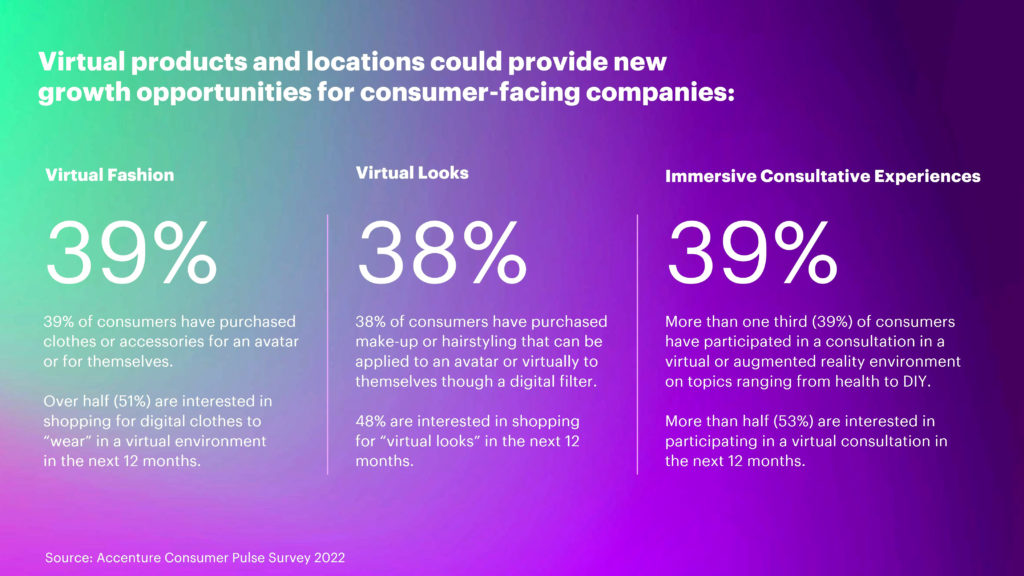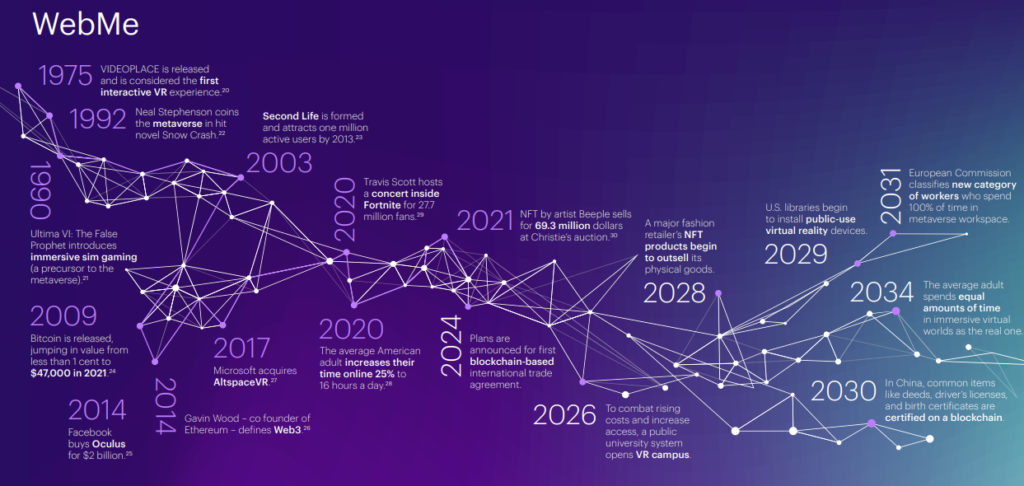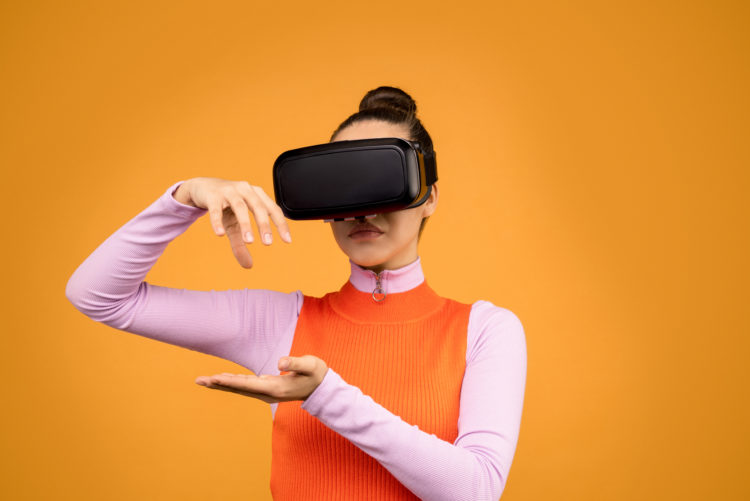Futurist, Bernard Marr, says concepts we find in metaverse date as far back as 1838 when scientist Sir Charles Wheatstone outlined the concept of "binocular vision” to make a 3D image. Watch the rest of the video below as Marr walks you back to the future of metaverse.
As we know the early application for virtual/augmented reality is in the gaming world. But arguably some of the ‘serious’ early commercial use cases for the technology are in environmental simulations both military and commercial.
FutureCIO spoke to Fabio Vacirca, market unit group lead – ASIAM at Accenture, on the promises, expectations and when metaverse could become a reality.

Editor’s note: Accenture refers to the metaverse as a continuum—a spectrum of digitally enhanced worlds, realities, and business models.
“We believe that it will revolutionise nearly all aspects of life and business in the next decade, allowing collaboration in virtual spaces, augmented physical places and a blend of both. And it will create new lines of business and transform interactions between customers and companies."
Fabio Vacirca
“Right now, businesses are racing toward a future very different from the one they were designed to operate in. Soon, every company will find themselves at the intersection of many new worlds, from building new physical and virtual realities to providing services in environments created by others,” he continued.
The Accenture Technology Vision 2022, “Meet Me in the Metaverse: The Continuum of Technology and Experience Reshaping Business,” claims that 90% of retail executives anticipate that leading organisations will push the boundaries of the virtual world to make it more real, increasing the need for persistence and seamless navigation between the digital and physical worlds.
Up to 72% of global executives believe that the metaverse will have a positive impact on their organisations, with 45% believing it will be a breakthrough or transformational.
Within Asia, how significant is this shift towards use of digital media to conduct business?
Fabio Vacirca: We see particularly strong demand in Asia, who are on average 10% more receptive to using virtual and augmented reality (AR/VR) to conduct business as compared to their global counterparts. Our survey revealed that 58% of Asian respondents have worked with colleagues in a VR/AR world in the past year – compared to 45% globally.
In fact, we see this trend accelerating over the next couple of years. 68% of respondents in Asia have expressed an interest in utilising such technologies at work this year. This means that businesses need to start reimagining how they can maximise value in the products and services they sell, support and operations, and the approach they will take to their customers and ecosystems.
Is this virtual transaction model limited to consumers though? What about businesses themselves? Do you see businesses opting to do business transactions virtually?
Fabio Vacirca: No, this virtual transaction model also extends to businesses. Accenture’s Tech Vision report found that 92% of global executives agree that leading organisations will push the boundaries of the virtual world to make it more real, increasing the need for persistence and seamless navigation between the digital and physical worlds.
In addition, 98% of global executives report that their organisation would consider using AR in the next three years, with the top three areas being: customer experiences (e.g., using AR to reimagine consumer experiences) (46%), customer service (e.g., using AR for customer support and service inquiries) (46%) and collaboration (e.g., using AR to drive interactive video conferencing) (44%).
What is the tipping point at which we will see a more digital/virtual model of engagement for retail customers? Do you think we will see a reversal?
Fabio Vacirca: While digital/virtual models of engagement, such as AI chatbots, and data were once a competitive differentiator, it is now a business necessity, and this technology has become indispensable to businesses, improving over recent decades.

Of course, aspects of the virtual world have gotten a bad rap — and for good reason. It can be annoying to call customer service with an important question, only for a bot to be greeted by a chatbot that cannot understand your request.
As synthetic data and images, chatbots and AR continue to rise, this will undoubtedly receive some pushback, with consumers having to constantly consider what’s real, and what’s not.
However, we think that being real has no direct bearing on being good, and being real should not be the guiding star for business or society.
We propose authenticity as the new compass. Authenticity means being true to oneself and genuine in a way that others can attest to. More concretely, using generative AI in an authentic way means taking heed of provenance, policy, people and purpose. As synthetic realness evolves, rather than asking “Is this real?” we’ll begin to evaluate "Is this authentic?”
What is the future for Asia’s SMEs given that they represent between 95-99% of businesses and that many lack the technology and financial clout to implement (on their own) this virt-real way of customer engagement?
Fabio Vacirca: First and foremost, most businesses aren’t going to develop all of these real-world technologies in-house, so interoperability between different companies’ products will be key.
Businesses should ensure that they’re involved with industry-wide alliances, helping to shape the development of new technology standards. For instance, from an interoperability perspective, this could mean participating in ecosystem-wide efforts to set standards for how devices connect and communicate.
Most companies will not be able to solve problems at scale, as they aren’t designed or equipped to, and they also may not want to be. These are large, systemic challenges, which is precisely why bringing partners together is so critical and necessary. What’s more, the partnership opportunities and alliances forming today are already starting to draw the rough outlines of tomorrow’s industry, and you don’t want to be left behind.
That said, even in a rich partnership ecosystem, it is important to invest in the development of in-house capabilities. This will help you access more purpose-specific technology capabilities and set companies up as leaders in their industry.
As new ways of engagement continue to see widespread adoption, their impact on industries’ most fundamental problems and parameters can either be an industry-ending event or the biggest opportunity in generations.
Companies must assess the technical debt they carry. They have to ask themselves: “What is the innovation interest we are passively incurring by holding onto technologies too long?” They have to create a roadmap for investment to pay down the technical debt and move to more agile architectures and technologies.
Of the four trends indicated in the report, which trend will have the most immediate (2022-2023) impact to Asia’s retail sector?
Fabio Vacirca: WebMe, which discusses how the metaverse and Web3 are poised to reshape the internet; will be a trend to watch. These emerging technologies are set to revolutionise the internet, transforming it from a disparate collection of sites and apps to a persistent 3D environment in which moving from one “place” to another will be as simple as walking from one room to another. This will play a huge role in enabling businesses to unified experiences and offering the interoperability of customers’ data across different platforms and spaces.

Asian consumers are already extremely interested in virtual living, with 80% of them have indicated that they’ve purchased a virtual good or taken part in a virtual experience in the past year (as compared to 64% globally). This trend is set to continue, with 92% being keen to do so soon.
These findings align with current reports of the metaverse hype hitting China, and Asia is poised to become the biggest non-fungible token (NFT) market in the years to come.
Retailers are seeing the potential of the metaverse. In addition to transforming customer experiences and relationships, stepping into the metaverse can help expand addressable markets and create new revenue streams.





